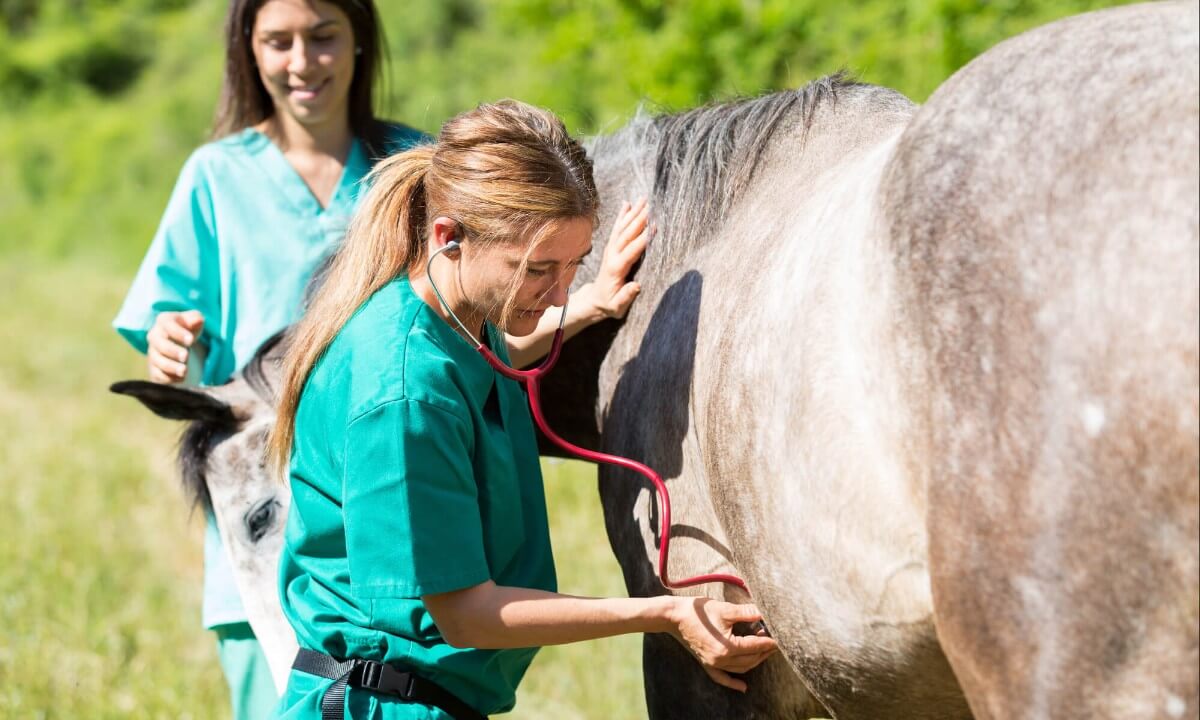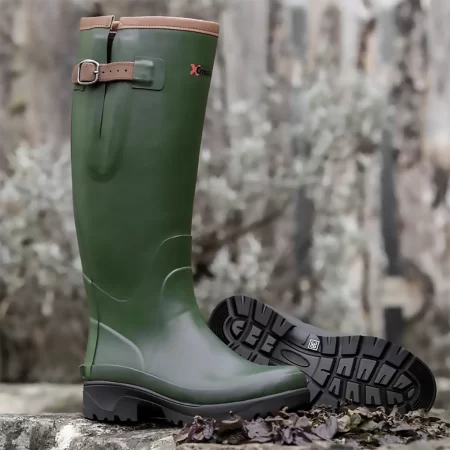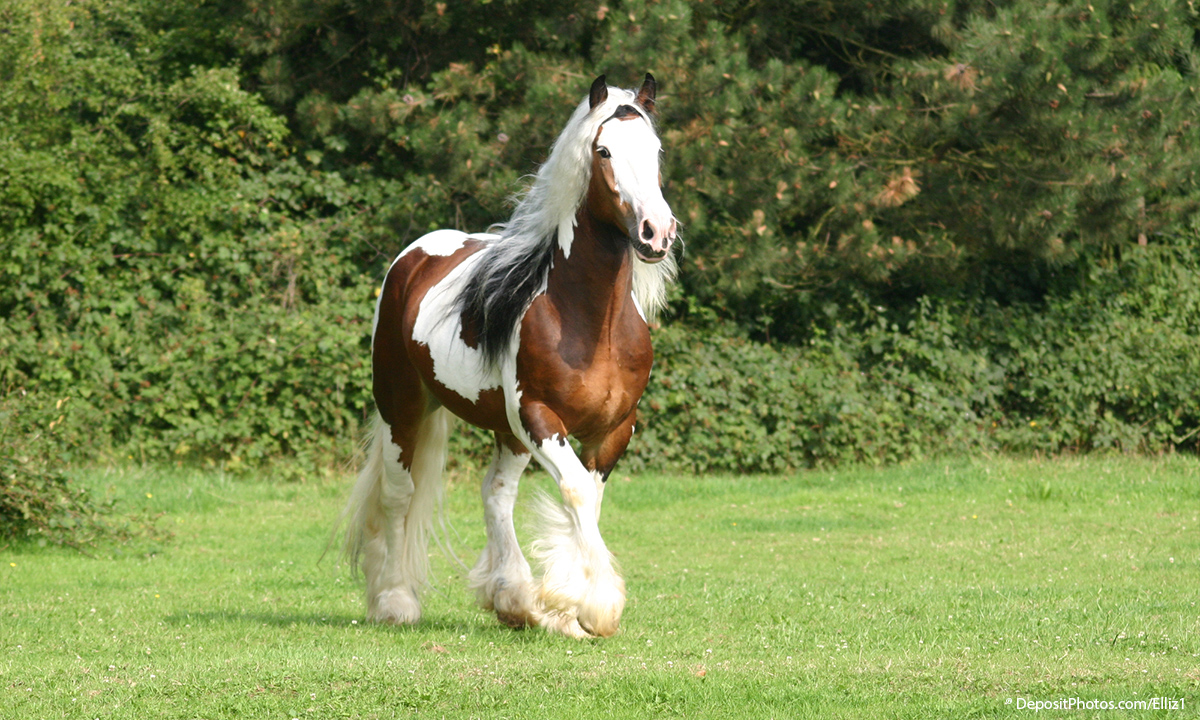Buying a horse is a big and often expensive decision so it is important to make the right decision and to buy the right horse. This not only involves finding a horse which has a pleasant manner, is good to ride, etc but also looking for a horse that is likely to remain healthy and is suitable for the type and amount of riding that is anticipated. To make a mistake and buy the wrong horse could be costly and heartbreaking.
Buying a car without an MOT would be unwise and on the same basis buying a horse without a pre-purchase examination by a qualified professional can be both risky and costly and in the case of a horse this examination is known as a vetting. A pre-purchase vetting can not only identify any existing health problems but may also identify potential health risks.
The horse vetting is carried out by a qualified vet on behalf of the purchaser and should be arranged with your own vet or an independent vet. It is important to discuss fully with the vet beforehand the intended type of and regularity of use that the horse is intended for. This ensures that the vet can give an accurate assessment as to whether the horse will be fit for the purpose intended based on its health.
The cost of vetting a horse may vary between veterinary practices and the type of vetting carried out. A basic or insurance 2 stage vetting will normally cost around £75 and a 5 stage vetting will normally cost around £250.
As well as providing a professional opinion on the health and suitability of a horse, a vetting may also be required for insurance purposes. Some insurance companies will not insure a horse unless it has at least had a basic 2 stage vetting carried out. The type of vetting carried out may also affect the amount of money that a horse can be insured for and in many cases if the horse is to be insured for over £5,000 then a 5 stage vetting will be required by the insurance company. The other advantage of having a 5 stage vetting carried out is that some insurance companies may not be willing to insure for loss of use without a 5 stage veterinary certificate. In addition, should the horse develop a condition resulting in loss of use shortly after purchase the 5 stage veterinary certificate can provide evidence that the horse did not already suffer from the condition at the time the insurance policy was taken out.
The 5 stage vetting examination consists of 5 stages detailed below set by the Royal College of Veterinary Surgeons and the British Veterinary Association where the horse is examined both at rest and at work and the examination usually lasts for between 2 and 3 hours. A basic 2 stage vetting varies but generally consists of examination along the lines of stages 1 and 2 only of the 5 stage vetting.
Stage 1
The first stage of the vetting is a preliminary examination with the horse stabled and any abnormal behaviour, signs of unsuitable temperament, etc will be noted. The vet will also note the general condition of the horse and then move onto examining the horse's heart, lungs and eyes.
The vet will then examine the horse outside whilst stood on a level surface to ensure that the horse's weight is distributed evenly and that it stands straight. The vet will examine the horse all over to check the eyes, nostrils, lymph glands, muscular development, spine and limbs and also to check for wounds, swellings, growths, scars, heat, etc. Once the vet has checked the horse over thoroughly the vet will proceed to stage 2 of the vetting.
Stage 2
During stage 2 the vet will view the horse at walk on a firm, flat surface to check that the horse shows regularity, suppleness and shows no sign of pain when moving. The vet will then require that the horse is trotted up on a flat, hard surface viewing the horse from behind, in front and from the side. The vet will look for regular, straight movement without restriction or any indication of lameness or pain.
The vet will also view the horse being turned and moved backwards to further assess the movement of the limbs and will carry out a flexion test - where each limb is lifted and held for a period of time before being released with the horse immediately being trotted and the vet views whether there is any abnormality in movement as a result of this flexion. The flexion test can be useful in assessing the seriousness of problems already identified and can also expose lameness problems not otherwise found. However, flexion tests can cause lameness in sound horses if applied too vigorously and so any doubt over the results of this part of the test should be discussed fully with the vet once vetting is completed as some unsoundness after a flexion test may not necessarily mean the horse will not be suitable for the intended use.
Stage 3
During stage 3 the vet will watch the horse carrying out strenuous exercise in order to note the horse's respiration and heart rate. If the horse is unbroken then exercise will be carried out on the lunge or the horse will be loose schooled, otherwise the horse will normally be ridden. The horse will be required to walk, trot and canter with the vet listening for abnormal sounds and at the end of the exercise the vet will examine the heart and lungs.
Stage 4
For stage 4 of the vetting the horse will be rested for up to 30 minutes and the heart and lungs will be examined again and blood samples taken.
Stage 5
During stage 5 the horse will be trotted up again in order to note that it continues to move soundly and shows no signs of stiffness after completing stage 3.
Once the vetting is complete the vet will fill out the necessary documentation and either "pass" or "fail" the horse. The results will record any abnormalities and signs of ill-health and will record their significance based on the use the horse is intended for. In some cases there may be areas in which a problem or potential problem has been identified. However, if the horse is particularly desirable it may be that further tests may be beneficial to establish the seriousness of the problem identified and whether they can easily be treated before deciding whether to buy the horse or not.
It is not the responsibility of the vet to make the decision as to whether to purchase the horse or not, but to provide a professional opinion of the health of the horse with the intended use borne in mind. If there is any doubt as to the suitability of the horse for its intended purpose based on its health it is important to discuss these fully with the vet so that an informed decision on whether to purchase the horse or not can be made.



















